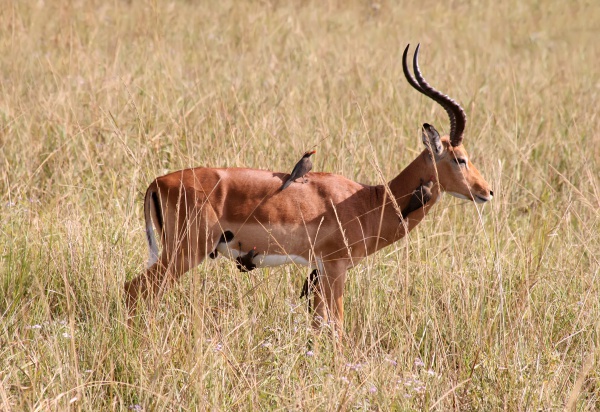Facts About Impala
The impala is a medium-sized antelope that roams the grasslands and woodlands of eastern and southern Africa. It is the sole species in the genus Aepyceros and was first introduced to Europeans by German zoologist Hinrich Lichtenstein in 1812. There are two types of impalas: the common impala and the black-faced impala.
What sets the impala apart are its remarkable leaping abilities, clever strategies to evade predators, and intriguing social structures. They congregate in groups that consist of territorial males, bachelor herds, and female herds. Impalas have a varied diet, grazing on grass and browsing on leaves and shoots. During the annual breeding season, known as the rutting season, which lasts six to seven months, a single calf is born. The mother immediately hides the calf to protect it from predators.
Impalas prefer habitats that are a mix of woodlands and savannahs, especially areas near water. The black-faced impala is found in southwestern Angola and Kaokoland in Namibia, while the common impala has a broader range and has even been reintroduced in regions like Gabon and southern Africa. According to the International Union for Conservation of Nature (IUCN), the common impala is not at risk, but the black-faced impala is considered vulnerable.
Impalas are diurnal, and their social behaviors change depending on the climate and geography. They are a key prey species for many African carnivores and have developed unique ways to evade them, including high jumps and specific calls. Impalas also host various parasites like ticks and lice. Their diet shifts with the seasons, allowing them to feed on different types of vegetation throughout the year.
Male impalas reach sexual maturity at about one year old, but they typically do not mate until they are around four years old. During the rutting season, males fight for dominance and the opportunity to mate with females. After a gestation period of six to seven months, females typically give birth around midday.
Conservation efforts are in place to protect impala populations, with a particular focus on the more vulnerable black-faced impala. The common impala can be found in many protected areas across Africa.

 Ethiopia
Ethiopia